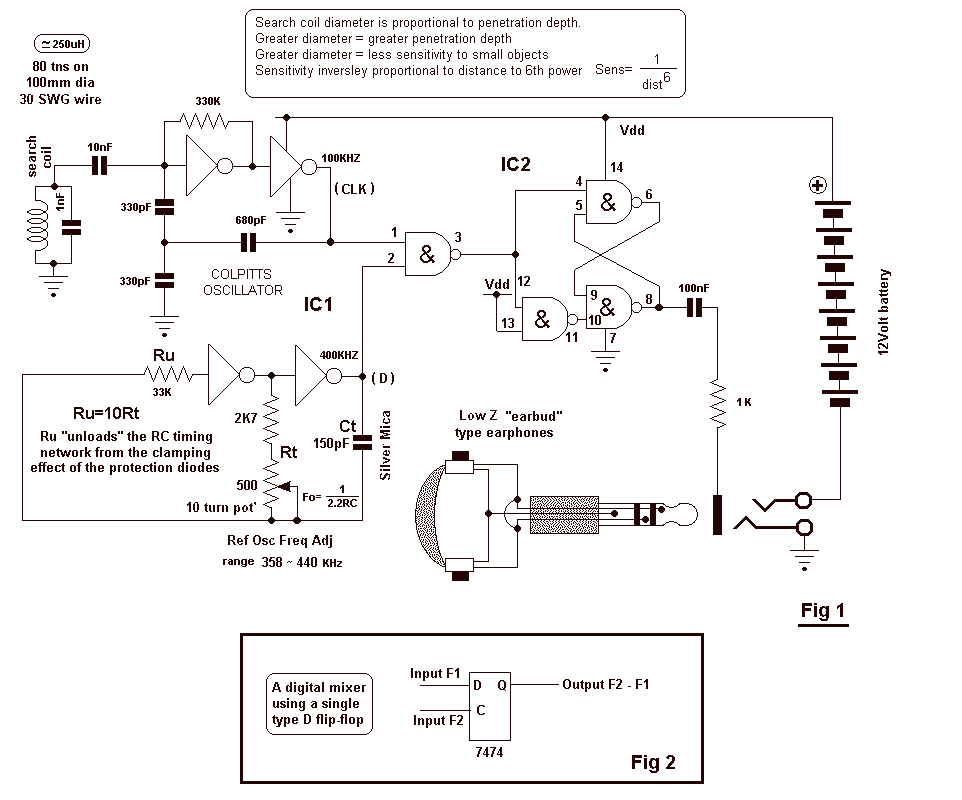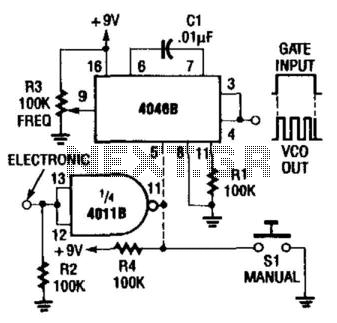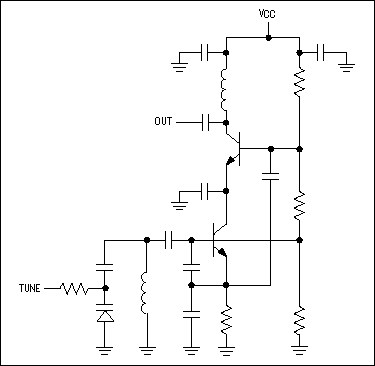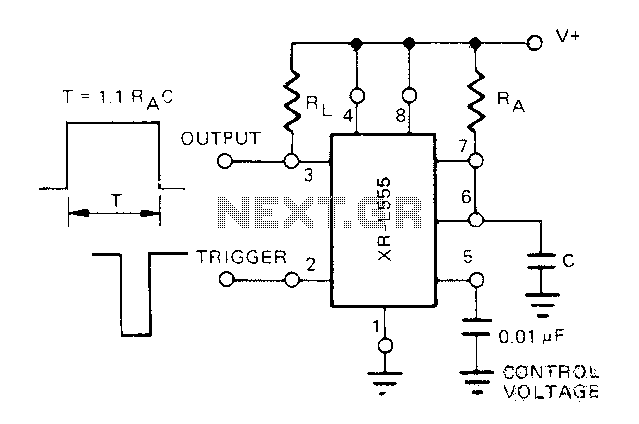
Micropower VCO (Voltage-Controlled Oscillator)
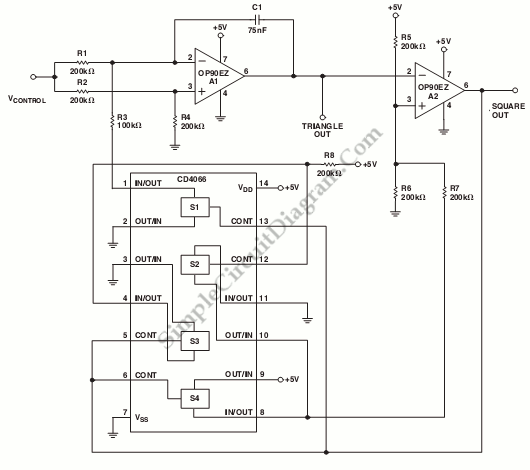
This is a schematic diagram of a micropower voltage-controlled oscillator circuit. This circuit can generate square and triangle wave outputs and only requires minimal power.
The micropower voltage-controlled oscillator (VCO) circuit is designed to produce both square and triangle waveforms, making it suitable for various applications in signal generation and modulation. The circuit typically consists of a few key components including operational amplifiers, resistors, capacitors, and a voltage control input.
In this design, the operational amplifier is configured in an astable multivibrator configuration, which allows for the generation of square waves. The frequency of oscillation can be adjusted by varying the resistance and capacitance values in the feedback loop. The triangle wave output is derived from the integration of the square wave signal. This is achieved by connecting a capacitor in the feedback path, which smooths the transitions of the square wave, resulting in a linear ramp-up and ramp-down voltage characteristic.
The power consumption of this circuit is kept to a minimum, making it ideal for battery-operated devices or applications where energy efficiency is crucial. The VCO can be controlled by an external voltage input, allowing for dynamic frequency adjustments based on varying control voltages. This feature enhances the versatility of the circuit in applications such as frequency modulation, waveform generation, and timing applications.
The design may also include additional components such as diodes for clamping the output levels and ensuring stability, as well as filtering capacitors to reduce noise and improve signal integrity. Overall, this micropower voltage-controlled oscillator circuit is a compact and efficient solution for generating precise waveform outputs in a variety of electronic systems.This is a schematic diagram of a micropower voltage-controlled oscillator circuit. This circuit can generate square and triangle wave outputs and only need.. 🔗 External reference
The micropower voltage-controlled oscillator (VCO) circuit is designed to produce both square and triangle waveforms, making it suitable for various applications in signal generation and modulation. The circuit typically consists of a few key components including operational amplifiers, resistors, capacitors, and a voltage control input.
In this design, the operational amplifier is configured in an astable multivibrator configuration, which allows for the generation of square waves. The frequency of oscillation can be adjusted by varying the resistance and capacitance values in the feedback loop. The triangle wave output is derived from the integration of the square wave signal. This is achieved by connecting a capacitor in the feedback path, which smooths the transitions of the square wave, resulting in a linear ramp-up and ramp-down voltage characteristic.
The power consumption of this circuit is kept to a minimum, making it ideal for battery-operated devices or applications where energy efficiency is crucial. The VCO can be controlled by an external voltage input, allowing for dynamic frequency adjustments based on varying control voltages. This feature enhances the versatility of the circuit in applications such as frequency modulation, waveform generation, and timing applications.
The design may also include additional components such as diodes for clamping the output levels and ensuring stability, as well as filtering capacitors to reduce noise and improve signal integrity. Overall, this micropower voltage-controlled oscillator circuit is a compact and efficient solution for generating precise waveform outputs in a variety of electronic systems.This is a schematic diagram of a micropower voltage-controlled oscillator circuit. This circuit can generate square and triangle wave outputs and only need.. 🔗 External reference

